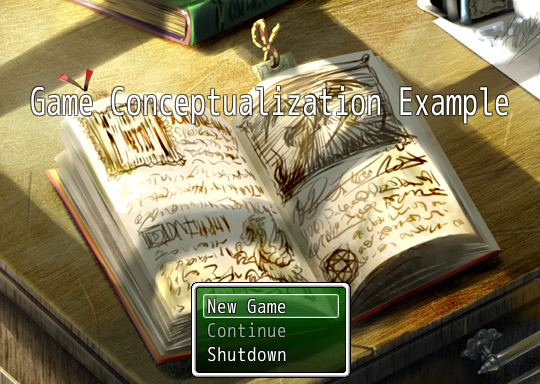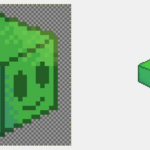This guide is intended to help you analyze your results from the first game conceptualization guide. If you have not read the first guide or played the game attached, please do so to maximize your benefit from this guide.
Howdy again! This guide is intended to walk you through the various choices presented in the sample game provided in the game conceptualization guide. Before we start, I’d like to take a moment to introduce you to the concept of domain knowledge. Domain (or embedded) knowledge is information that an observer has prior to witnessing an event – this information can be theoretical or practical (practical knowledge we refer to as experience). The reason domain knowledge is important to analyzing the choices in a game is that if you are already familiar with the choices before you, your mind will automatically discount bad choices and guides you towards what you already know to be an optimal choice.
In the context of the sample game, did you already know to talk to the people around you after you started? Did you know how to find the save menu? Do the statistics on your characters make sense? If you’re familiar with playing Japanese style RPGs, then you already possess domain knowledge that other players might not. This prior knowledge is the worst if you’re the designer of a game – you know everything there is to know about your game, and without added perspective you’ll like make a game that can be confusing for players. A number of these confusing choices intentionally were provided as part of this guide – it’s intended that they trip you up slightly to demonstrate how frustrating bad choices can be for a player.
In order to analyze game content properly, we need to look at what our decisions are, and why we make them. At that point, we can begin to improve on the game, making it even more fun than before. Here’s a series of questions by scene that you should try answering as part of your learning process:
Scene 1: Guildmaster’s Office
- Who did you talk to first? Why?
- Did you feel compelled to ask additional questions of the guildmaster? Why or why not?
- Did you know how to exit the scene? What clue did you have?
Scene 2: Home Base, Inn, Shop
- Did you try talking to anyone? What compelled you to do so? If your answer was “because it’s an RPG”, then you’re a victim of domain knowledge! A fresh player won’t know that.
- Did you learn anything interesting while talking to the people in the base? This adds to your domain knowledge – several of the NPCs will tell you things you don’t need to know… yet.
- Did you check your party menu? Did you even know how to get there? Newer players may need more information than you had.
Scene 3: Our World
- Where did you go first, and why did you head that way?
- Did you notice the mountain trail in the north? This is an example of bad communication – it looks interesting enough to check out, but it doesn’t go anywhere.
- Did you discover the variety of encounters based on terrain types? There was a clue for this if you talked to the NPCs in home base, but you can also discover this by chance.
- Did you travel the entire map before proceeding? If so, why?
- When you first got into combat, how did you develop your strategy?
- If you got hit with a status effect, how did you handle it? Did you know what it meant?
Scene 4: Silver Bark
- At this point, you should already have a grasp on how to interact with the game world. Did you try interacting with objects other than NPCs? Did that even seem possible?
- Did you find the chest? What did you expect to happen when you did?
- The merchants in this town are very pricey for a very technical reason – there are multiple ways to get money in this game, and the fastest methods have strings attached that compensate the cost. This reasoning is completely invisible to players – how many similar choices have you made as a developer?
Scene 5: Forest Shrine
- The game called out this location when you spoke to the elder in the village. When you communicate a choice to a player, sometimes the best way to control the order players experience content is to simply not allow them the choice until they’re ready.
- Did you understand the thug’s deal before you made your decision? What was different about him?
Scene 6: Forest Camp
- This one is pretty streamlined at this point. By having players make the same types of decisions over and over again, you can prime them to make more optimal choices.
- However, this also is the perfect place for the curve ball. After talking with the logging boss, where did you go next, and why?
There are a couple other scenes after these first six, but after you handle the twist in scene 6 the rest of the game plays out very quickly, and handling that twist is the point of the guide. Most players at this point will already know what the game expects them to do – they learned by watching for cues or by dying until they got it right. So at this point, ask yourself what and how has to be communicated to the players in order for them to stay engaged? Then, ask yourself this: in your own game, is it obvious what players should be doing to enjoy the game? Are the core choices interesting, and are they communicated well?
If you’ve taken these guides to heart, then you’ve already got the perspective you need to help build a game concept that is fun and engaging.






